Compiler 4: CFG, Parsing
- 编译原理
- 2025-09-29
- 162热度
- 0评论
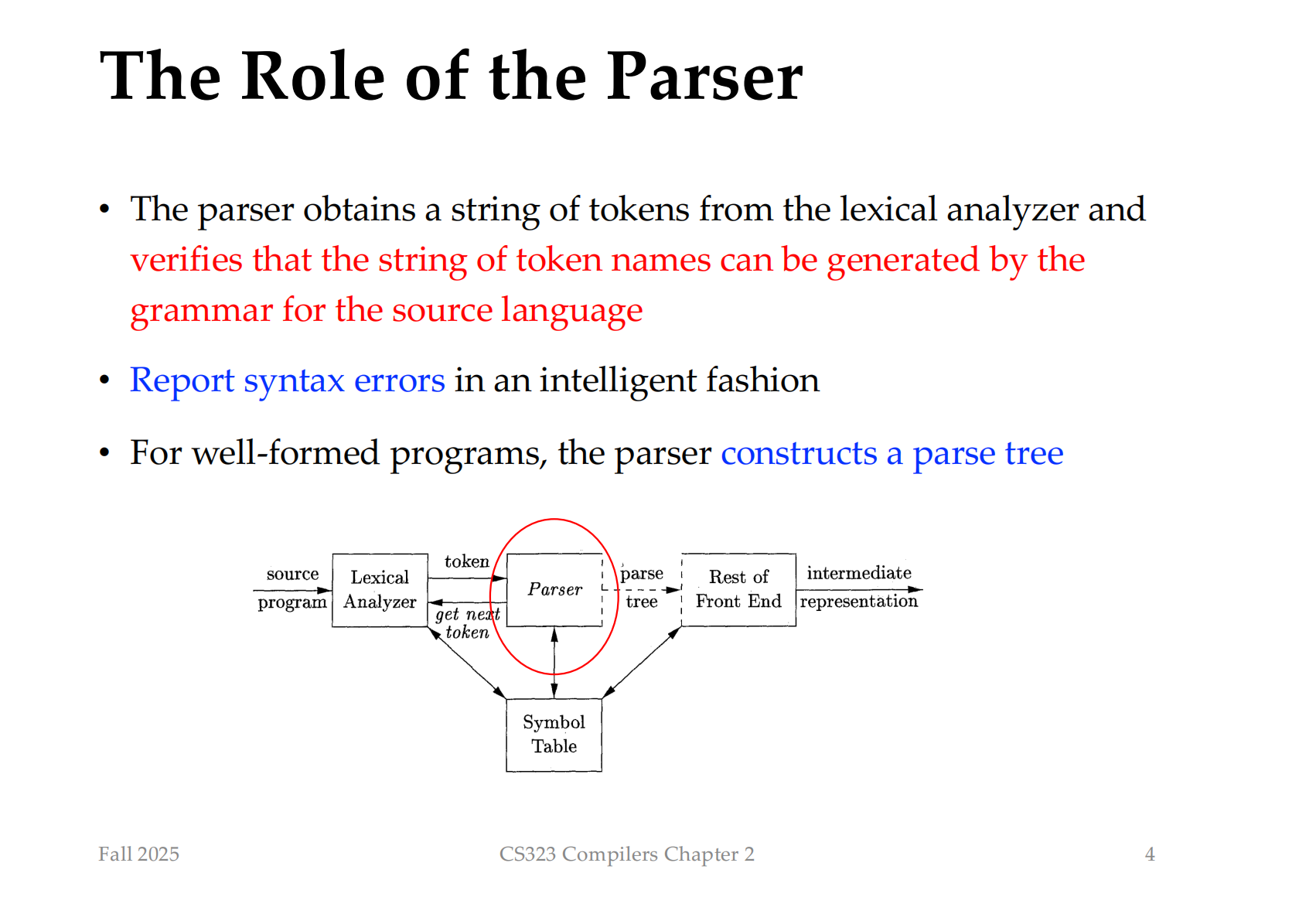
CFG
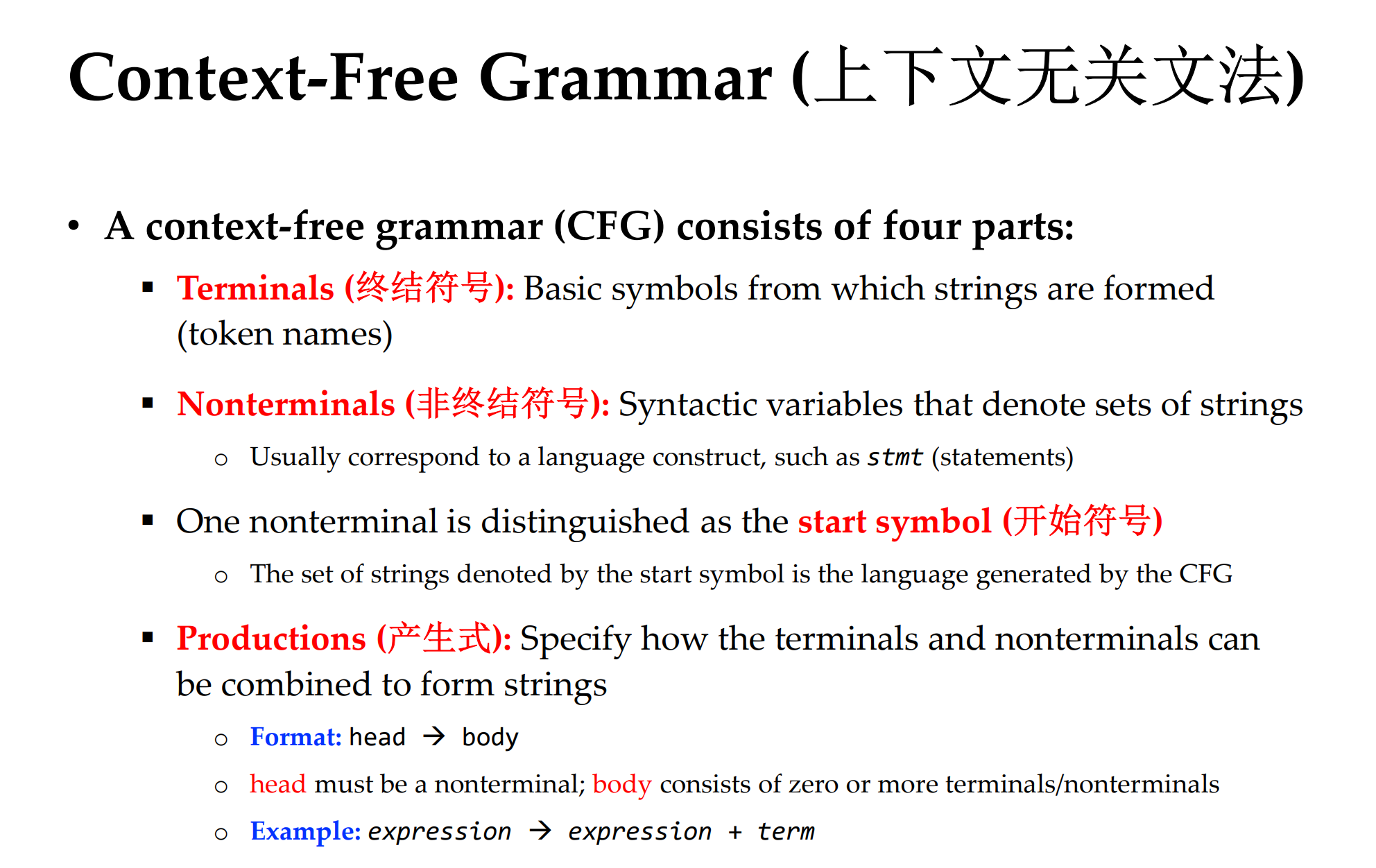
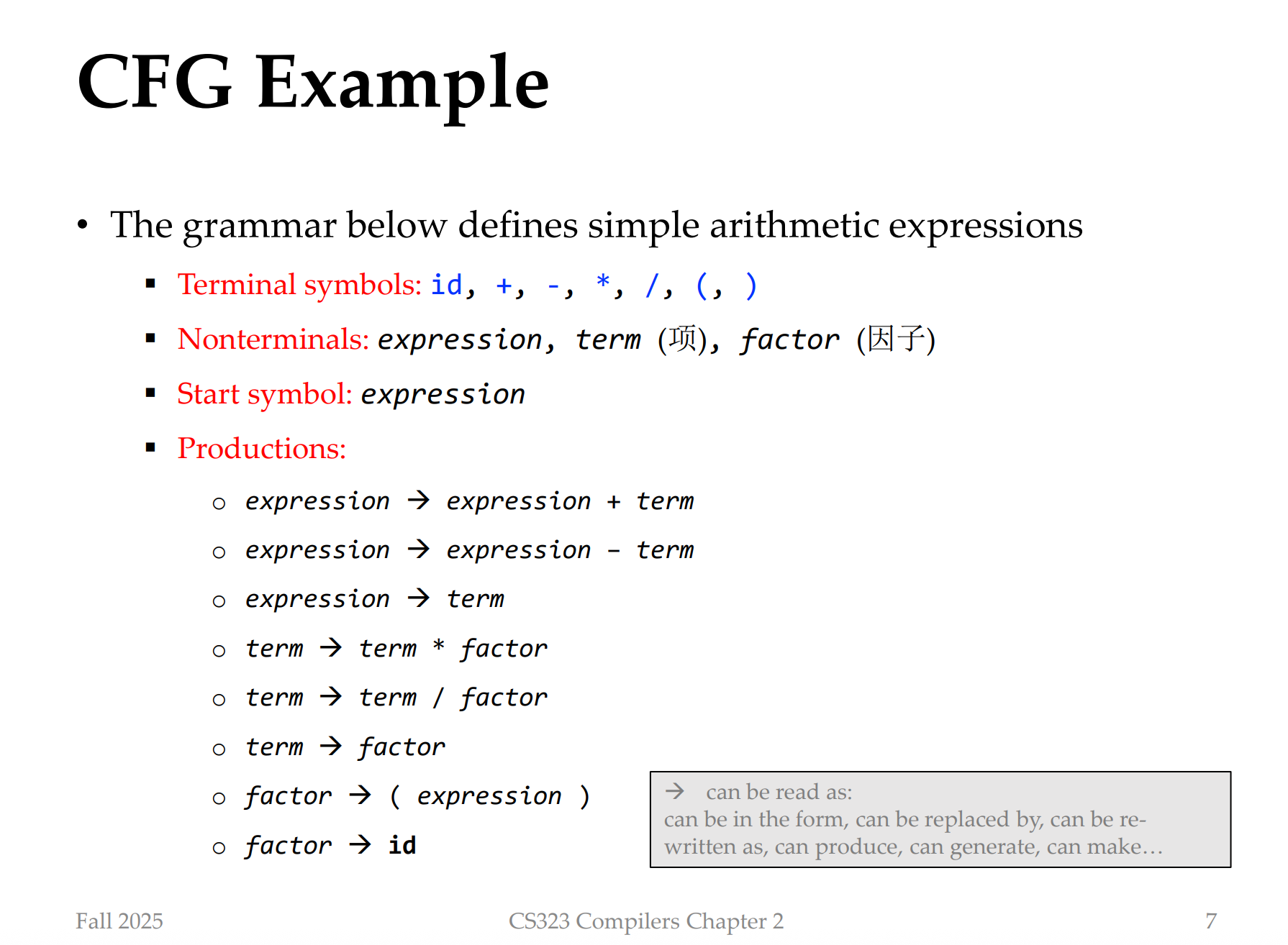
Terminal: 对应loop,对应if,对应XX
Productions: 产生式
Derivation推导
CFG可以推导很多不同的式子
Notations
Terminologies 文法的句型
这里我们看到,文法
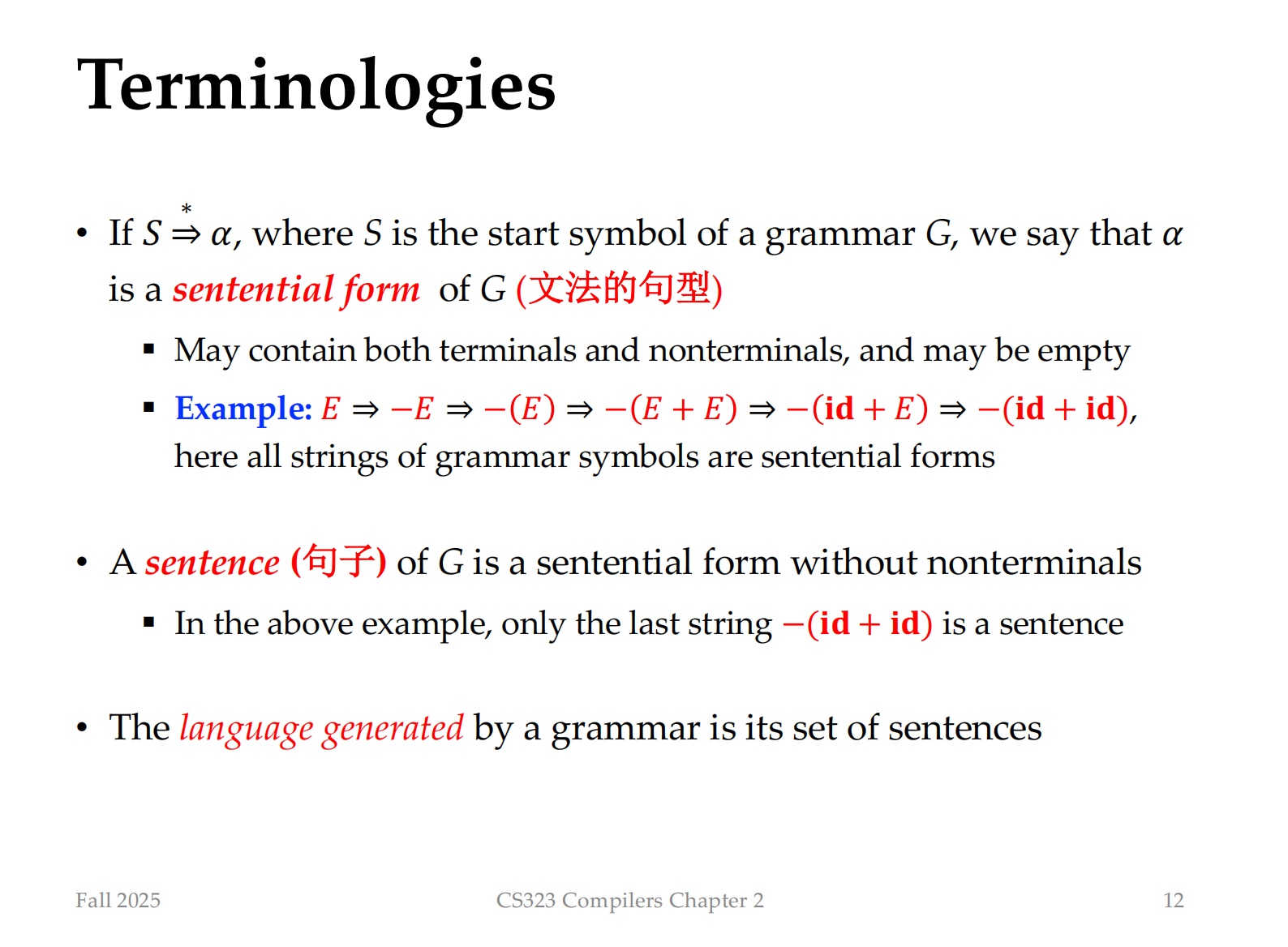
最左推导 & 最右推导
在编译原理中,最左推导和最右推导都是从文法的开始符号(Start Symbol)出发,通过不断用产生式替换非终结符,逐步推导出一个句子的过程。区别在于:每一步选择替换的非终结符的位置不同。
1. 最左推导(Leftmost Derivation)
- 规则:在句子中,始终优先替换最左边的非终结符。
- 意义:生成的过程是“从左到右”逐步展开非终结符。
- 形式化记号:用
⇒_lm表示。
例子:
文法规则:
S → AB
A → a
B → b推导字符串 ab 的最左推导:
S ⇒_lm AB
⇒_lm aB (替换最左边的非终结符 A)
⇒_lm ab (替换 B)2. 最右推导(Rightmost Derivation)
- 规则:在句子中,始终优先替换最右边的非终结符。
- 意义:生成的过程是“从右到左”逐步展开非终结符。
- 形式化记号:用
⇒_rm表示。
例子:
还是上面的文法,推导字符串 ab 的最右推导:
S ⇒_rm AB
⇒_rm Ab (替换最右边的非终结符 B)
⇒_rm ab (替换 A)3. 区别与联系
- 区别:
- 最左推导:每一步替换最左边的非终结符。
- 最右推导:每一步替换最右边的非终结符。
- 联系:
- 它们推导出的终结串(最终结果)是相同的,只不过推导过程不同。
- 最左推导对应自顶向下的分析(Top-Down Parsing),常用于递归下降分析。
- 最右推导的逆过程对应自底向上的分析(Bottom-Up Parsing),尤其是LR分析。
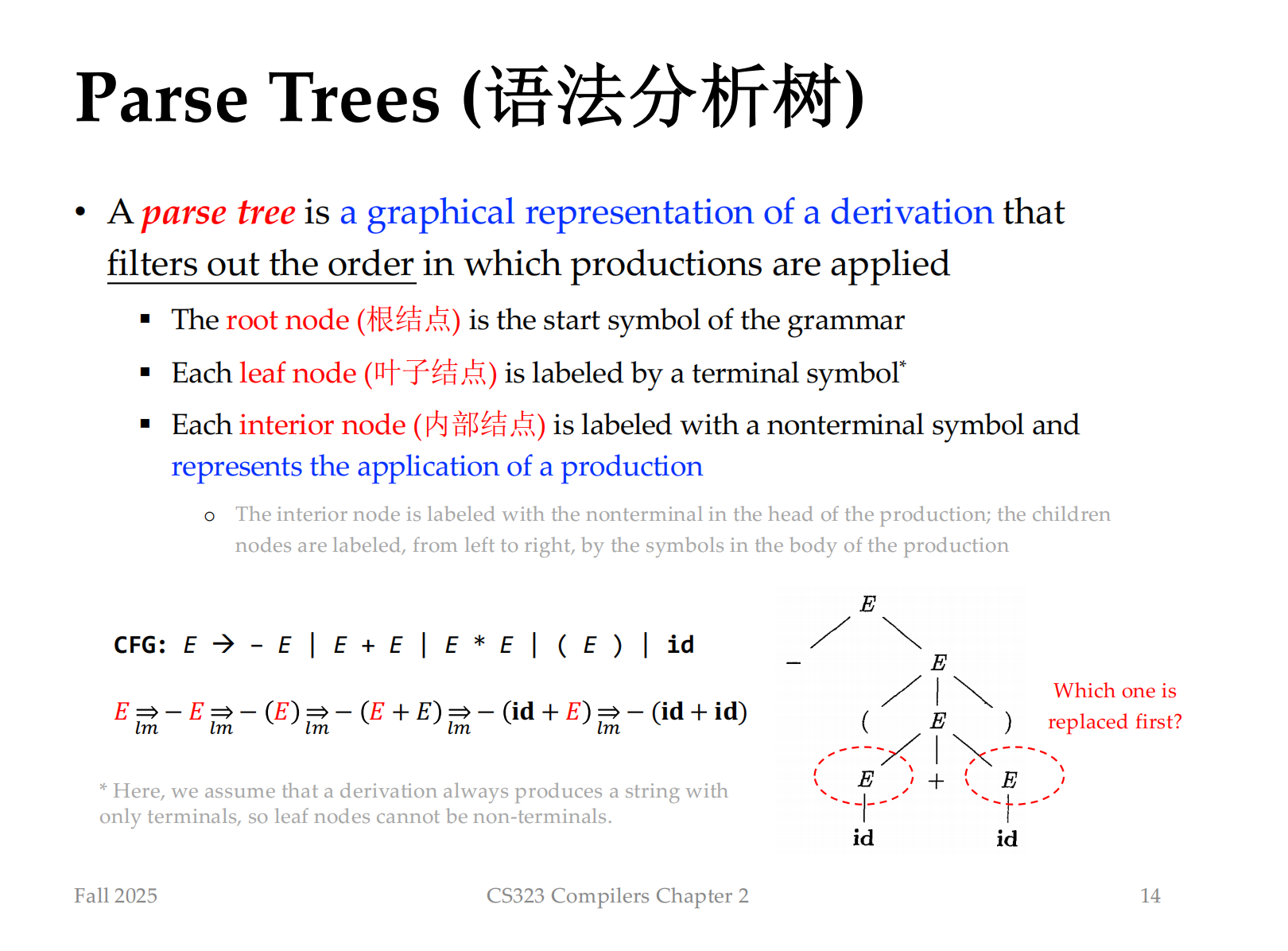
推导跟分析树是many - one
但是 leftmost / rightmost 跟分析树是 one to one
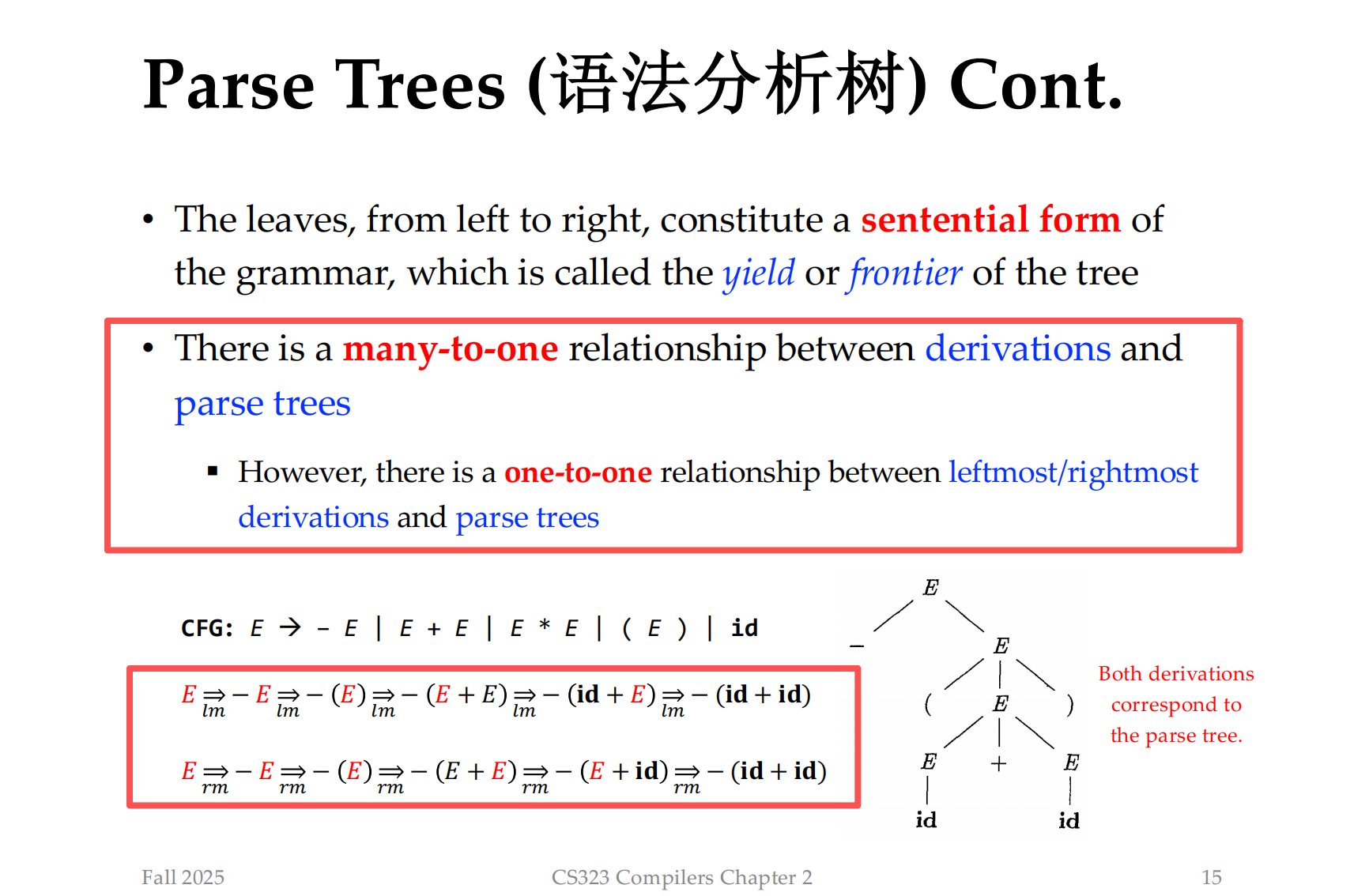
模糊的二义性 Ambiguity
如果一个语句,它可以有两个语法分析树,那它就是Ambiguity
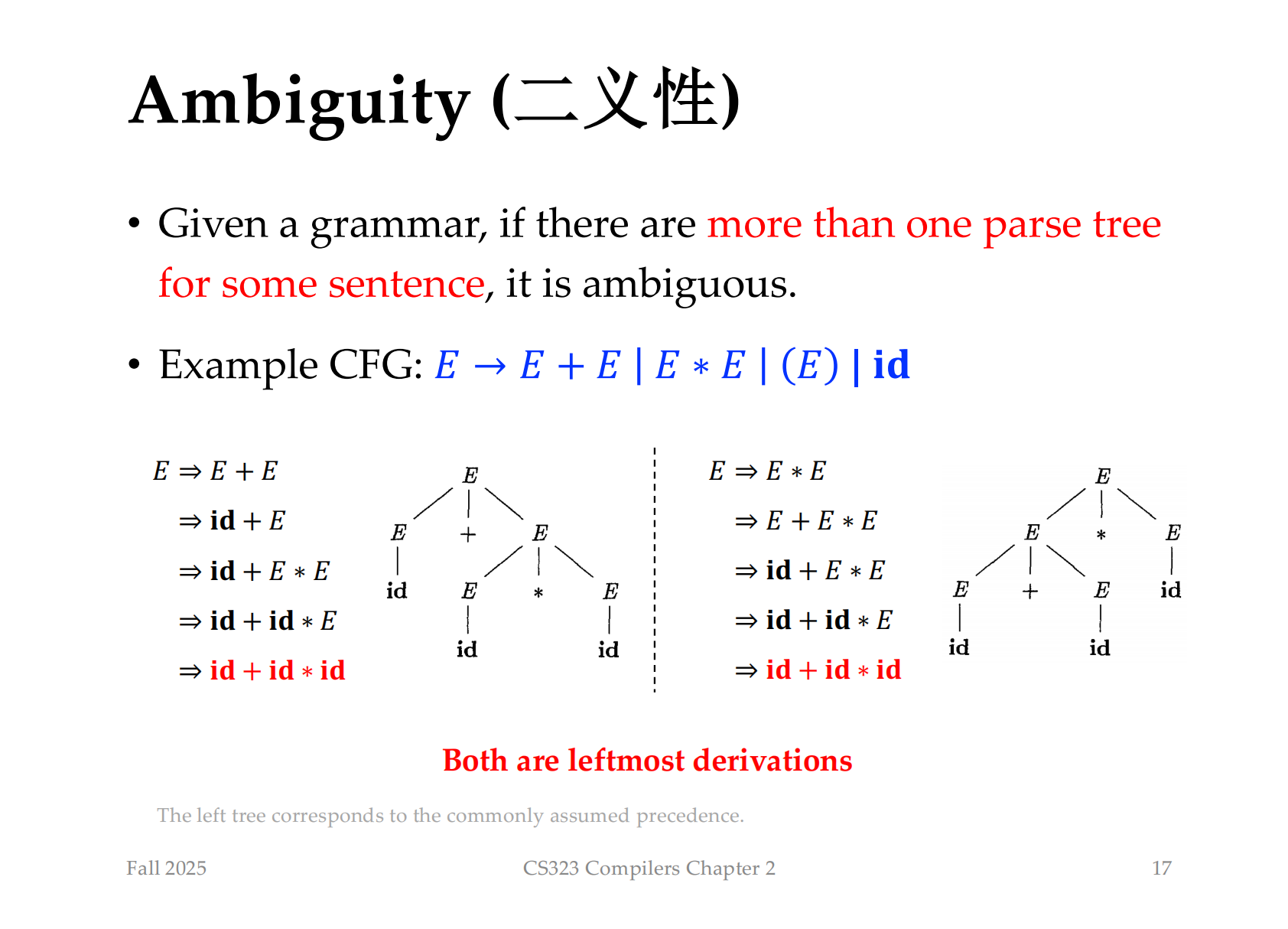
The grammar of a programming language typically needs to be unambiguous
CFGs are more powerful than regexp
CFG are powerful, while regexp are more efficient
Every language that can be described by a regular expression can also be described by a grammar (i.e., every regular language is also a context-free language)
- Some context-free languages cannot be described using regular expressions
RegExp = NFA -> CFG 运用构造法证明
Each regular language can be accepted by an NFA. We can construct a CFG to describe the language
对于每个state,我们能做一个nonterminal symbol $A_i$
对于每个跳转/变化,我们能构建 $A_i-> \alpha A_j$
下图里左边是CFG,右边是NFA。
方法:
- 根据0,1,2,3,构建:$A_0, A_1, A_2, A_3$
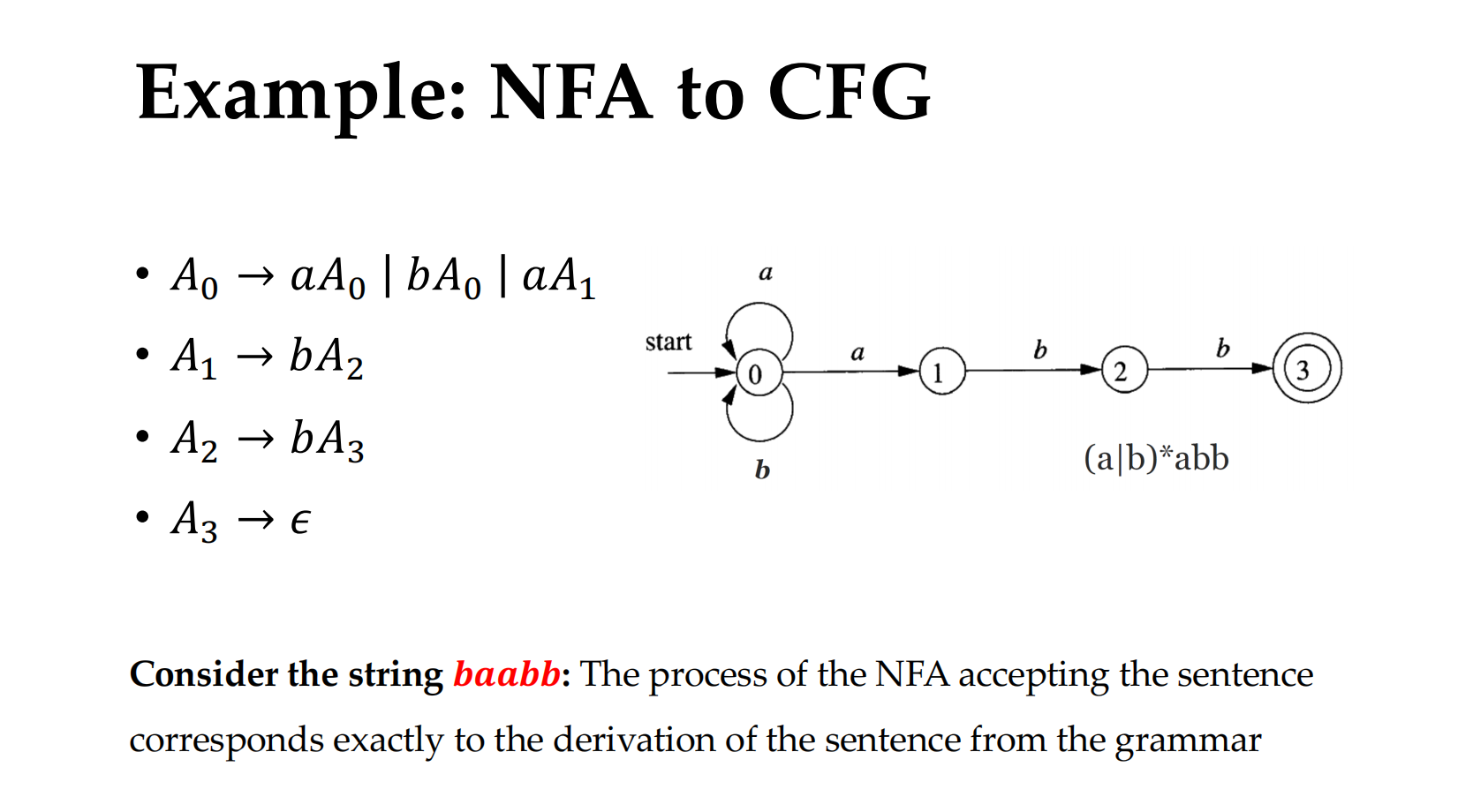
So:

Consider the string 𝒃𝒂𝒂𝒃𝒃: The process of the NFA accepting the sentence corresponds exactly to the derivation of the sentence from the grammar
however, CFG > Regular Expression
some Context free languages cannot be described using regulat experssions
ab, aabb, aaabbb,
编程出现:小括号大括号的匹配
你给的文法是:
$$[
S \to aSb \mid ab
]$$
我们来逐步解释它“在说什么”。
1. 推导规律
- 递归规则:
S -> aSb
表示在一个已经符合规则的串外面,再加一个a在最左边、一个b在最右边。 - 基础规则:
S -> ab
表示最基本的串是"ab"。
2. 能生成的串
从最小的情况出发:
S -> abS -> aSb -> a (ab) b = aabbS -> aSb -> a(aSb)b = aaabb b = aaabbbS -> aSb -> a(a(a b b) b) ...依次类推
所以生成的串是:
ab, aabb, aaabbb, aaaabbbb, ...3. 总结规律
这个 CFG 生成的语言是:
$$[
L = { a^n b^n ;\mid; n \geq 1 }
]$$
也就是说:数量相等的 a 和 b,先全是 a,再全是 b。
它表达的是“左右对称、个数匹配”的一种结构。
要不要我帮你画出这个文法的推导树(比如 aaabbb 的最左推导和推导树)
左推导
S
⇒ a S b
⇒ a a S b b
⇒ a a a b b b (把最左侧的 S 用 ab 代换)
⇒ aaabbb
Parse Tree
S
├── a
├── S
│ ├── a
│ ├── S
│ │ ├── a
│ │ └── b
│ └── b
└── b
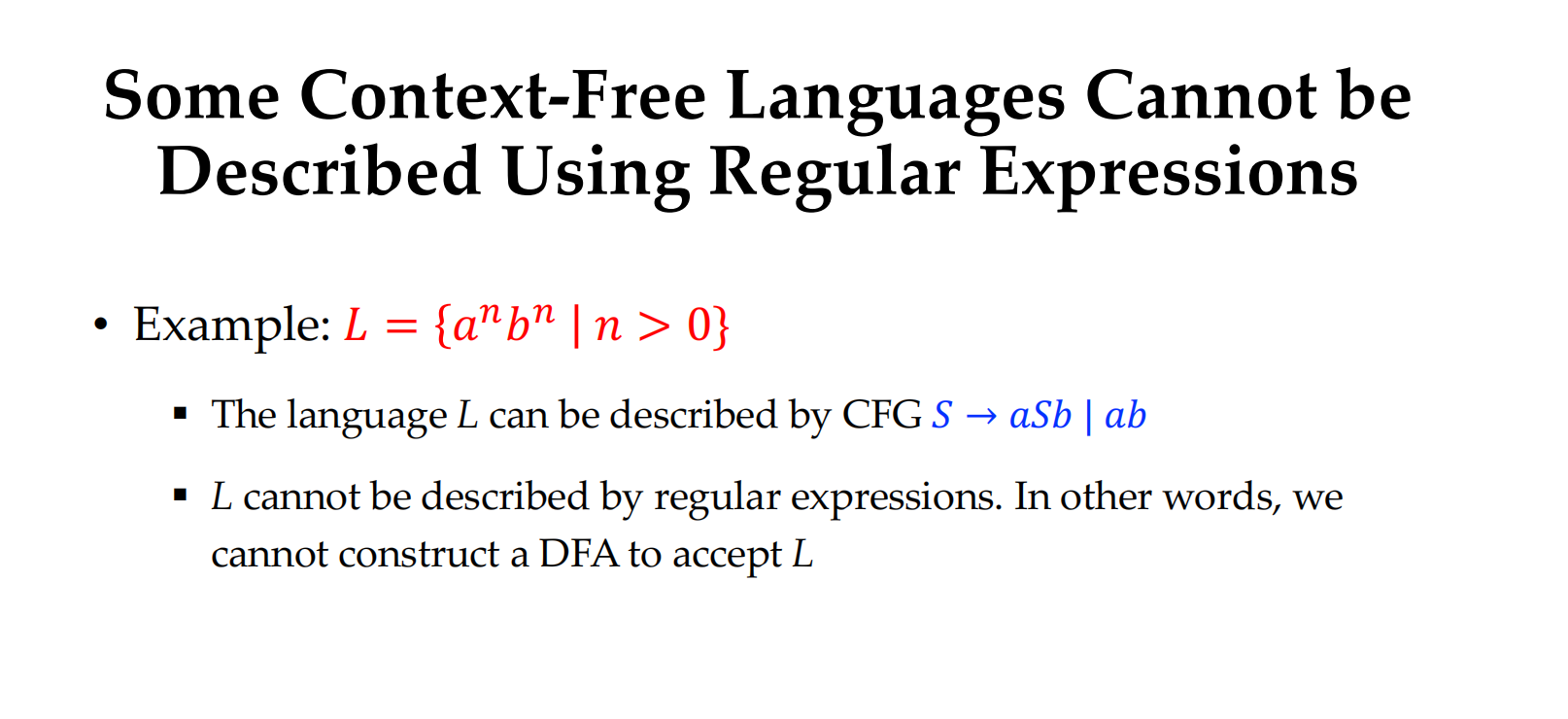
如何证明找不到这个语言?反证法
假设我找到了:
我们中间有一个状态,它是一定会被匹配两次的,分别是字符串 a_i 和 a_j (为什么会被匹配两次呢,因为状态数)
设语言 LLL 是正则的,那么必然存在一个确定有限自动机 (DFA) D 来识别它。
这个 DFA 有 k 个状态。
- 处理长串时的状态重复
考虑一个输入串,比如 $s=a^{k+1} b^{k+1} ∈L$。(其实我们可以取 K+2,K+3,K+XXXX状态, 都没关系,说白了就是有限自动机无法表示无限的状态)
- 当 DFA 读入前 k+1 个
a的时候,它总共会“走” k+1 步。 - 但 DFA 只有 k 个状态。
-
根据鸽巢原理,在这 k+1 步里,必然有两个时刻落在同一个状态。
- 比如读完前 i 个
a和读完前 j 个a(i<j)都到达了状态 s。
- 比如读完前 i 个
形式语言理论里有一个工具叫 抽取引理(Pumping Lemma for Regular Languages),用它能证明
a^n b^n不是正规语言:
- 假设
a^n b^n是正则的。- 根据抽取引理,可以把一个足够长的串(比如
a^p b^p)分成三段xyz,其中中间的y可以抽取(重复任意次)而仍然属于语言。- 但如果
y只包含 a,那么多抽几次就会变成a^(p+|y|) b^p,a 和 b 数量不再相等 → 矛盾。- 所以
a^n b^n不是正则语言。
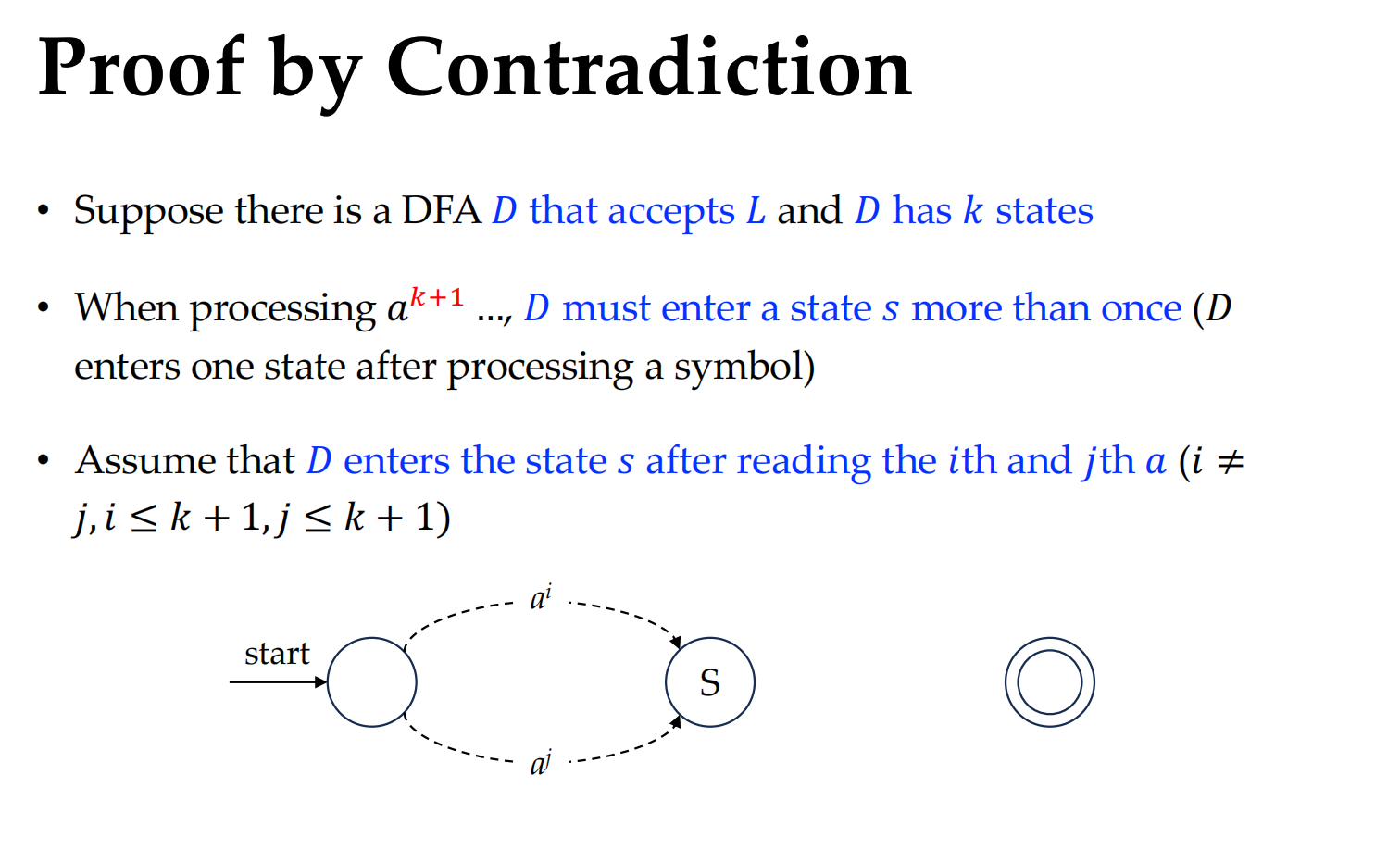
那么我们就能匹配上 a_i b_j,但是这不是正则表达式想要的
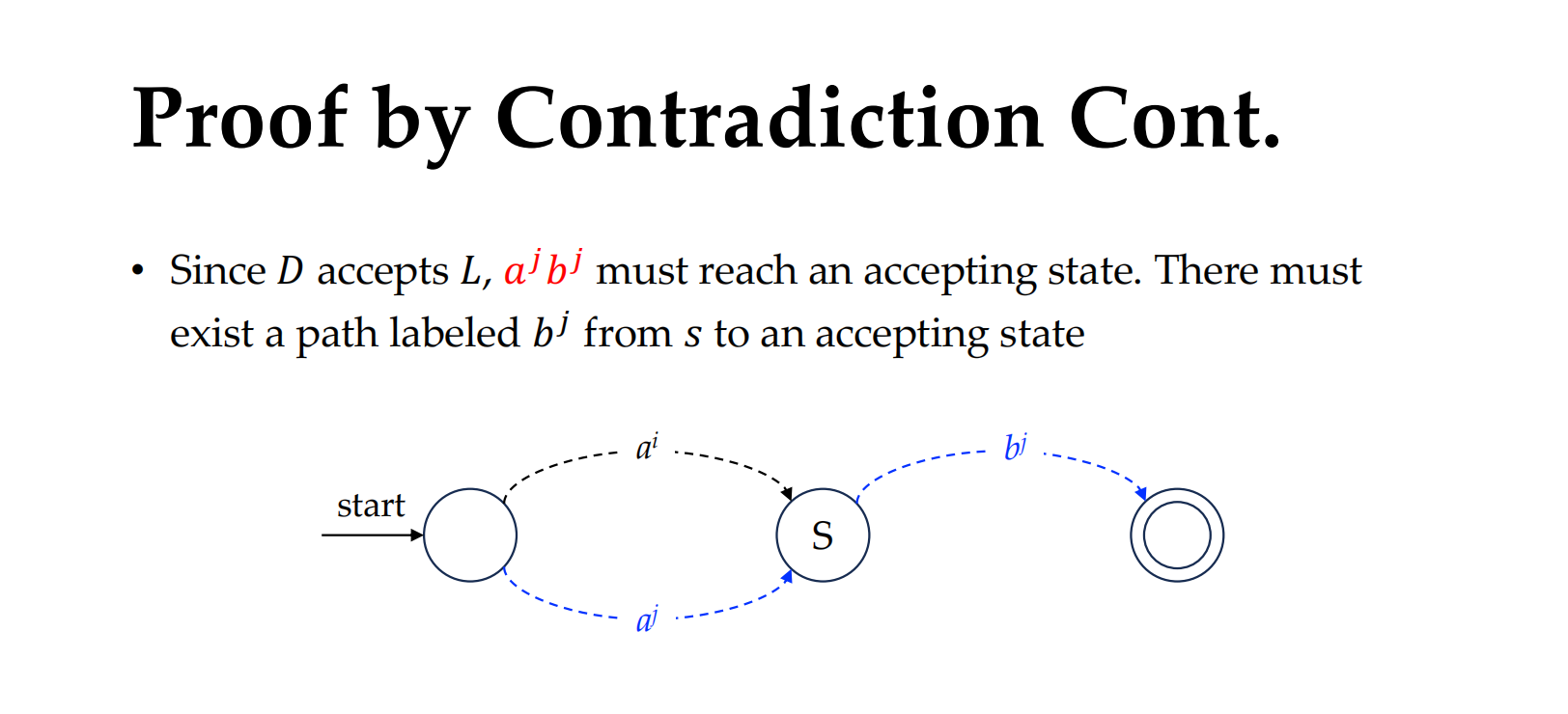
Top-Down Parsing
Problem definition: Constructing a parse tree for the input string, starting from the root and creating the nodes of the parse tree in preorder (depth-first)
要根据输入的string,构建一个语法生成树
Two basic actions in top-down parsing:
§ Predict: Determine the production to be applied for the leftmost nonterminal* (of the current parse tree’s frontier)
§ Match: Match the leading terminals in the chosen production’s body with the input string
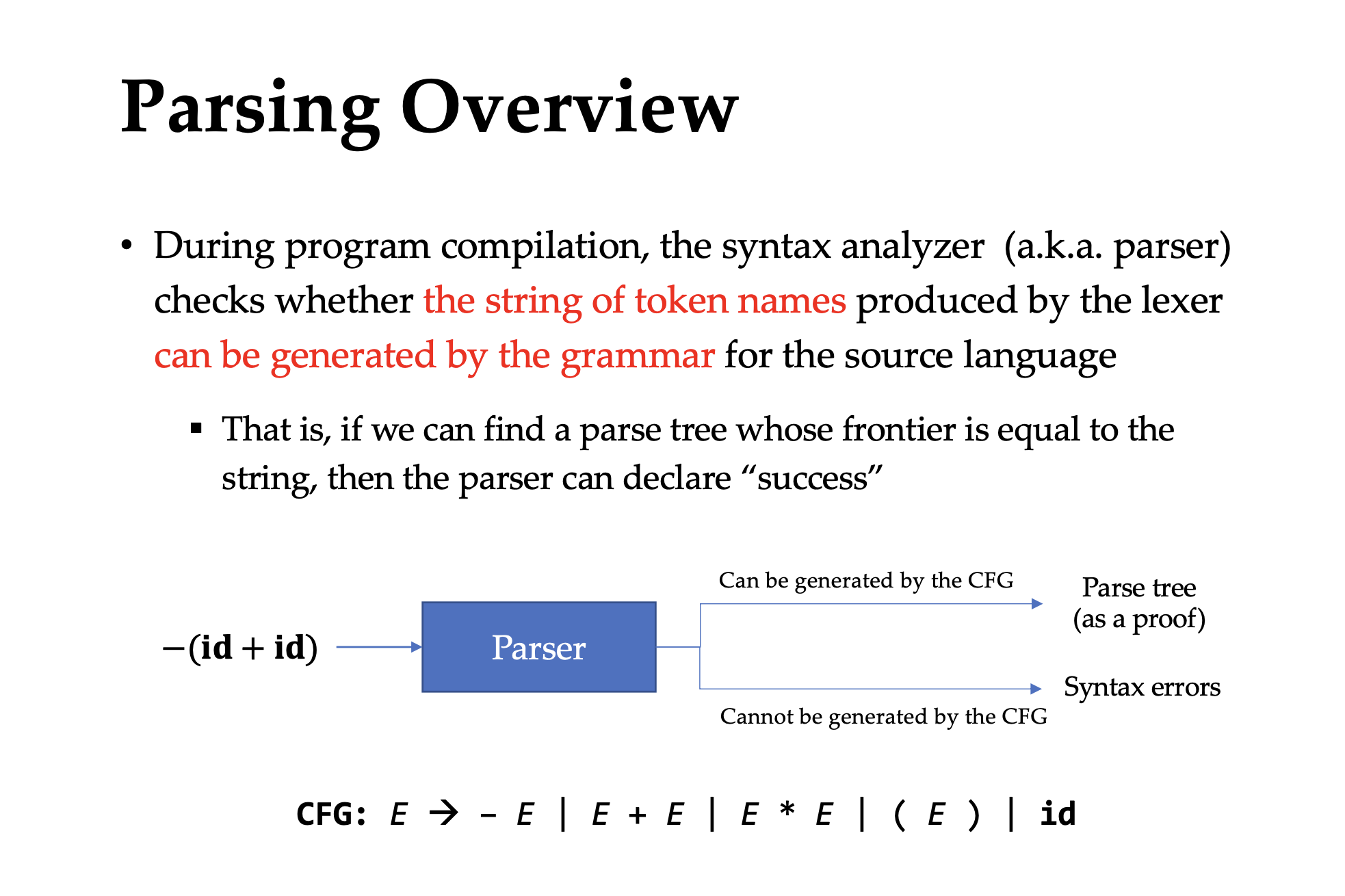
Parsing 例子:
用几个语法Grammar Symbol,我们就能匹配 input string
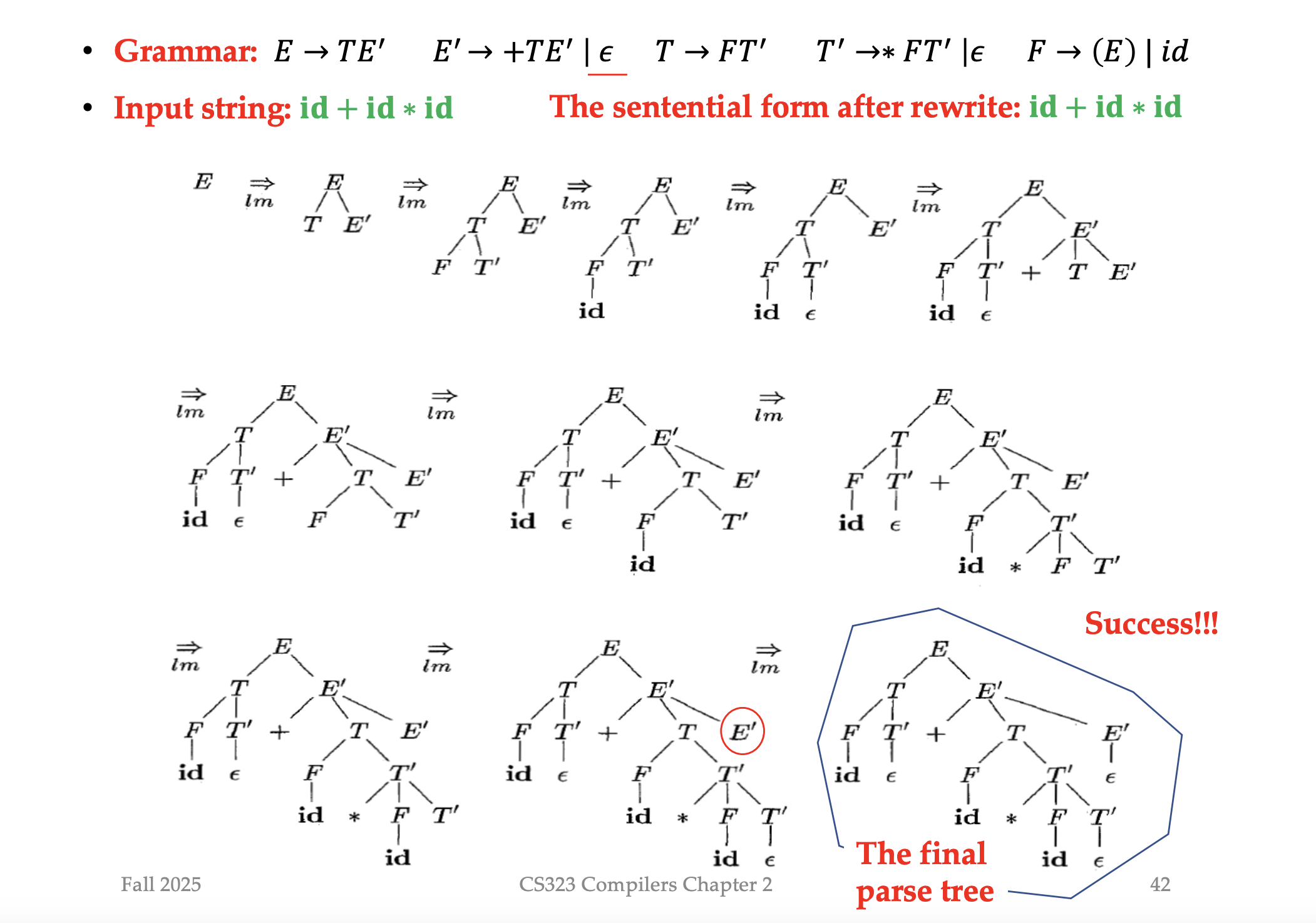
永远是一个最左的句型(最左推导:每一步替换最左边的非终结符。)
We can make two observations from the example:
• Top-down parsing is equivalent to finding a leftmost derivation.
• At each step, the frontier of the tree is a left-sentential form.
问题:你怎么知道选谁?
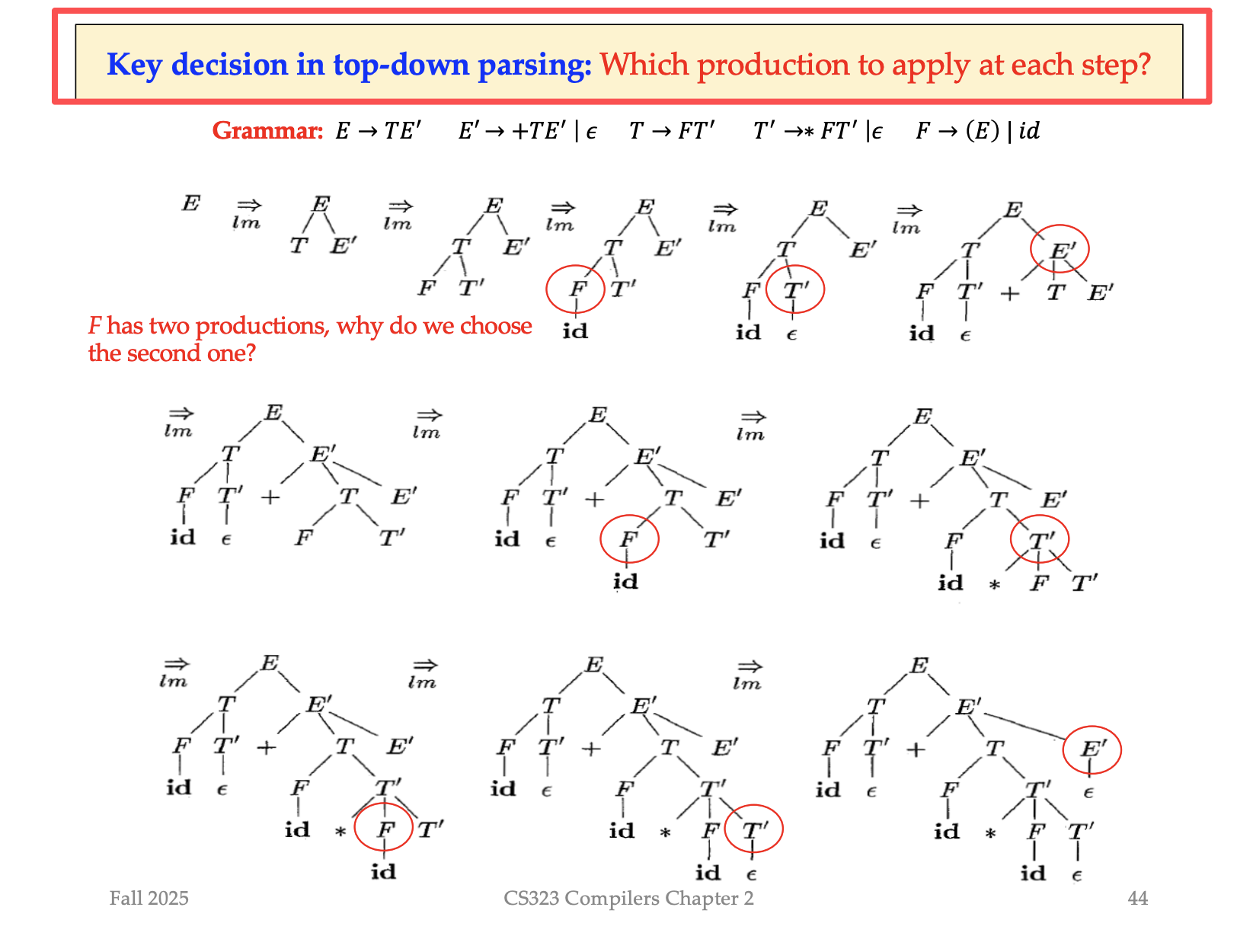
方法:Recursive-descent parsing
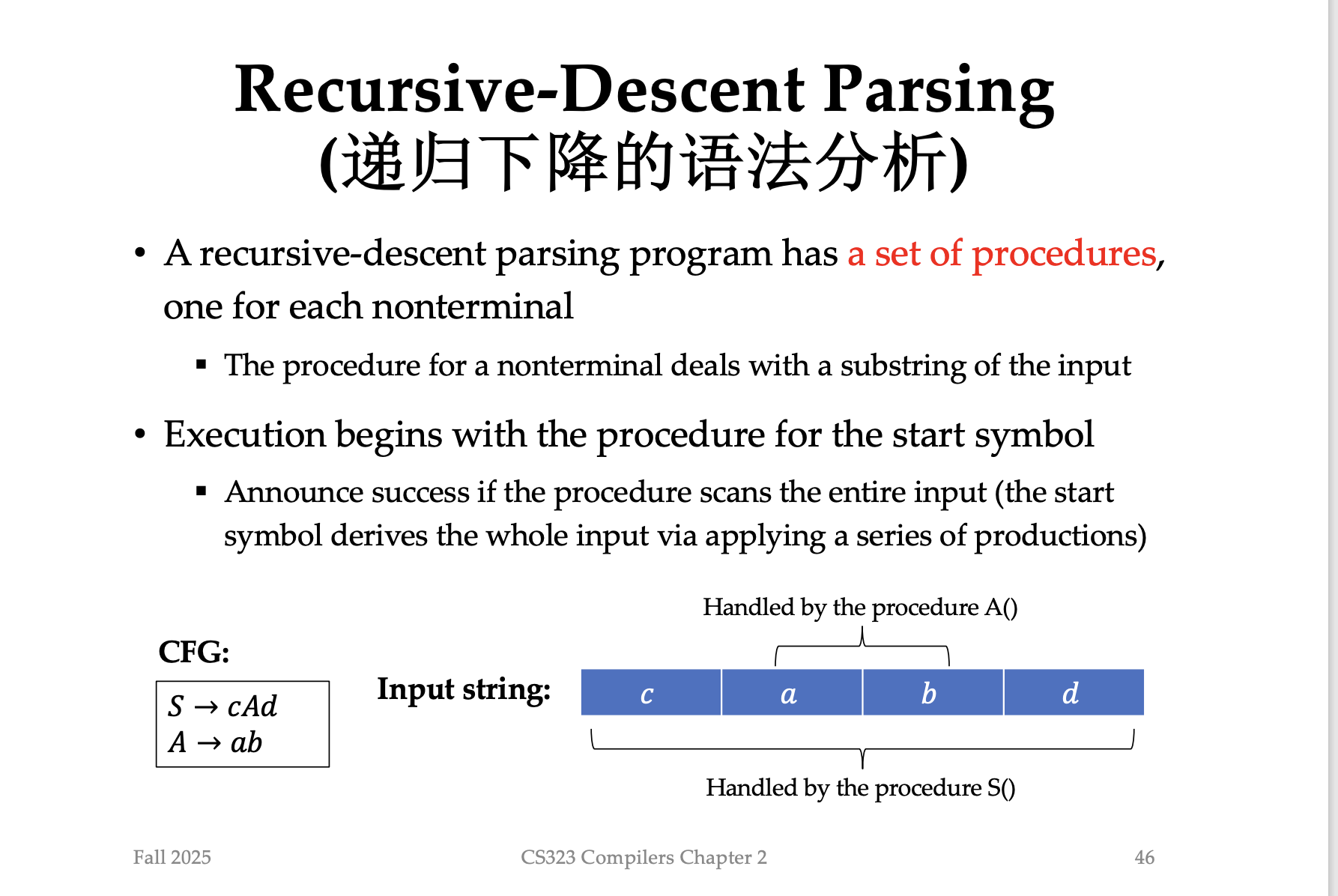
搜索方法:
- 选择一种 A-production 分解方法,将 A分解为 X_1, X_2, ... X_k
- 每个X分别的去处理
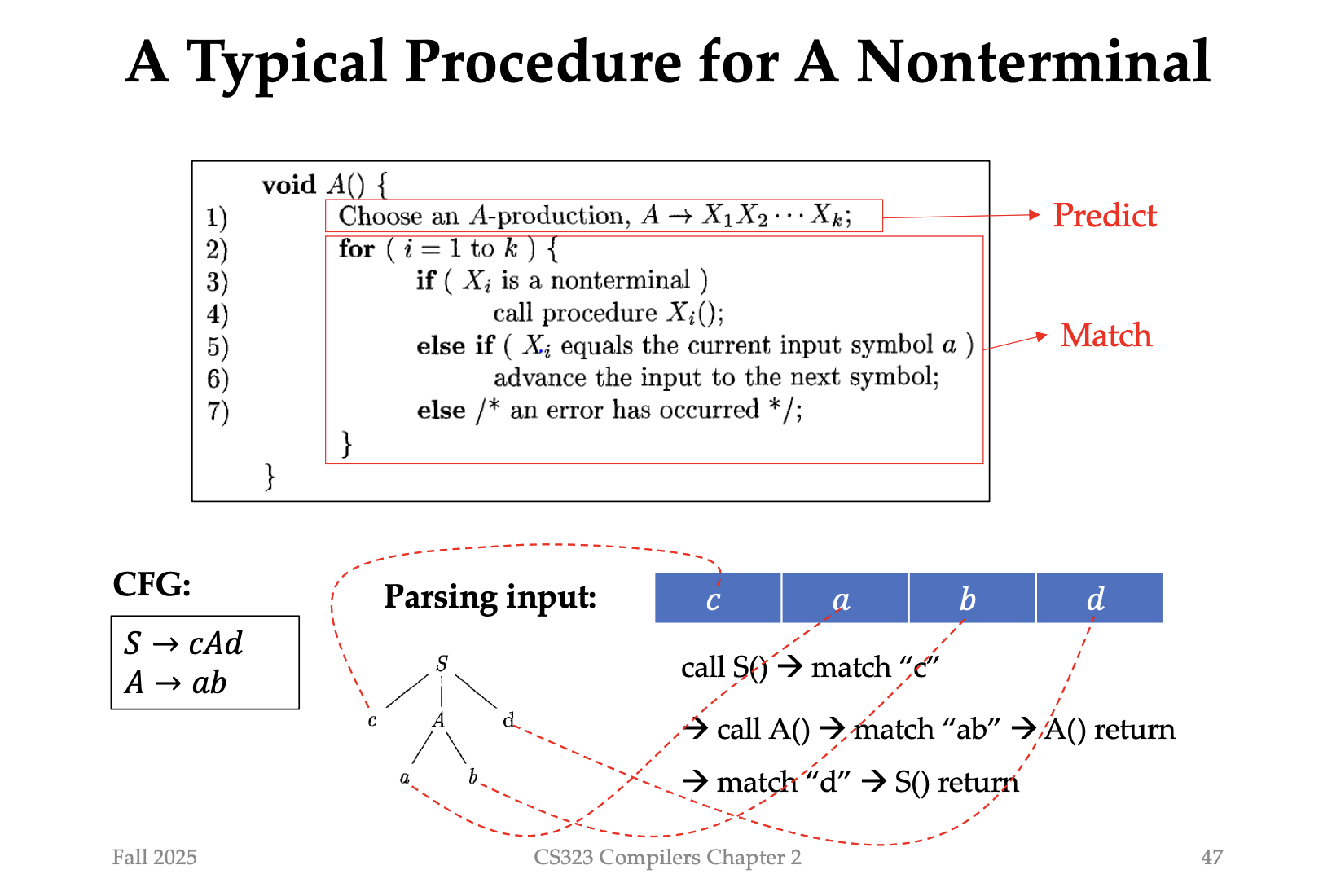
例子:
A. 先选S,我们选择 S->cAd
for (c,a,b,d):
call S() -> match "c",c是一个terminal
下一步循环,找到“A”,A不是nonterminal,call A() —— for(a,b) match -> return
match "d" -> S() return
递归下降:
递归,有可能调用到自己
下降:不断的调方法分解
